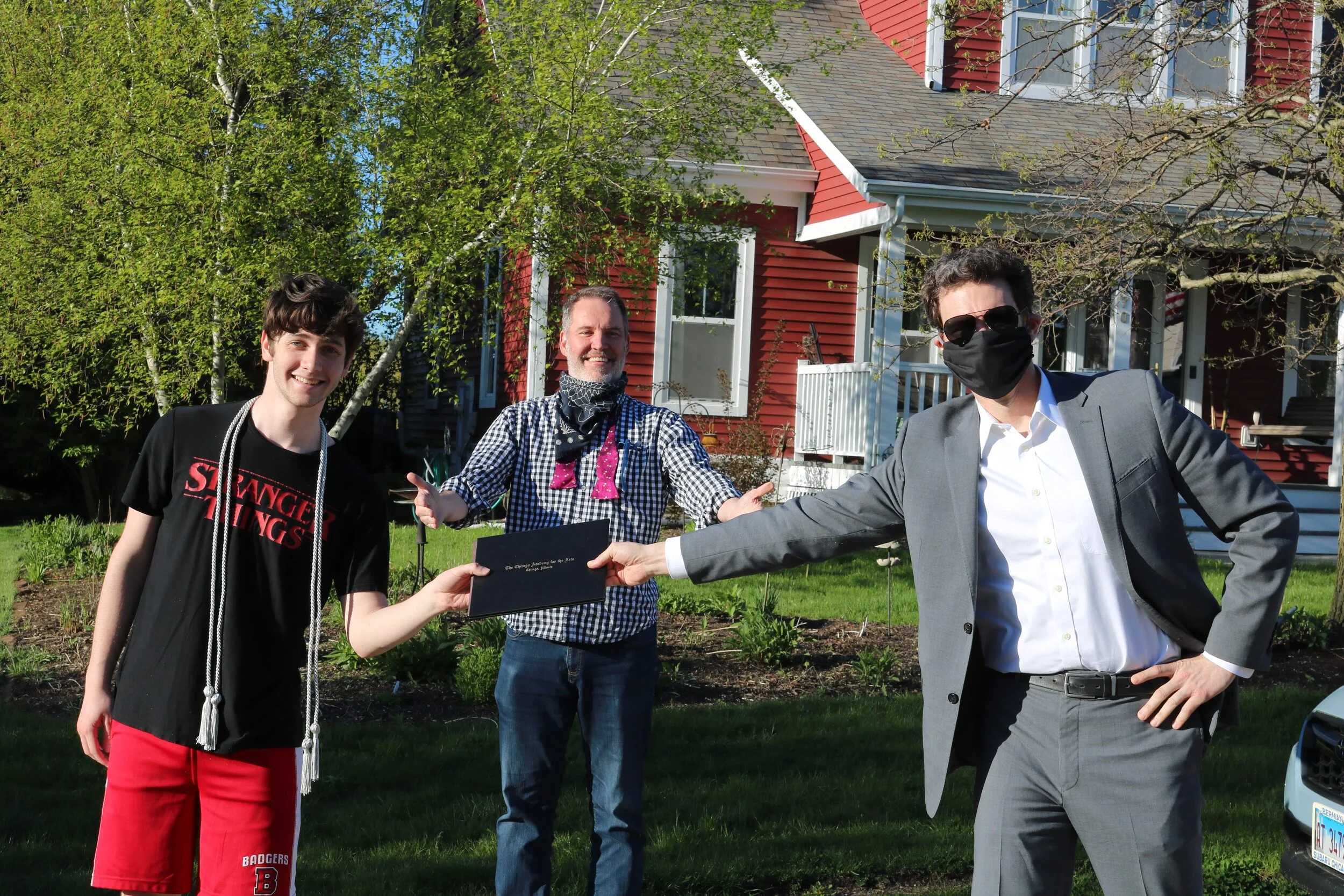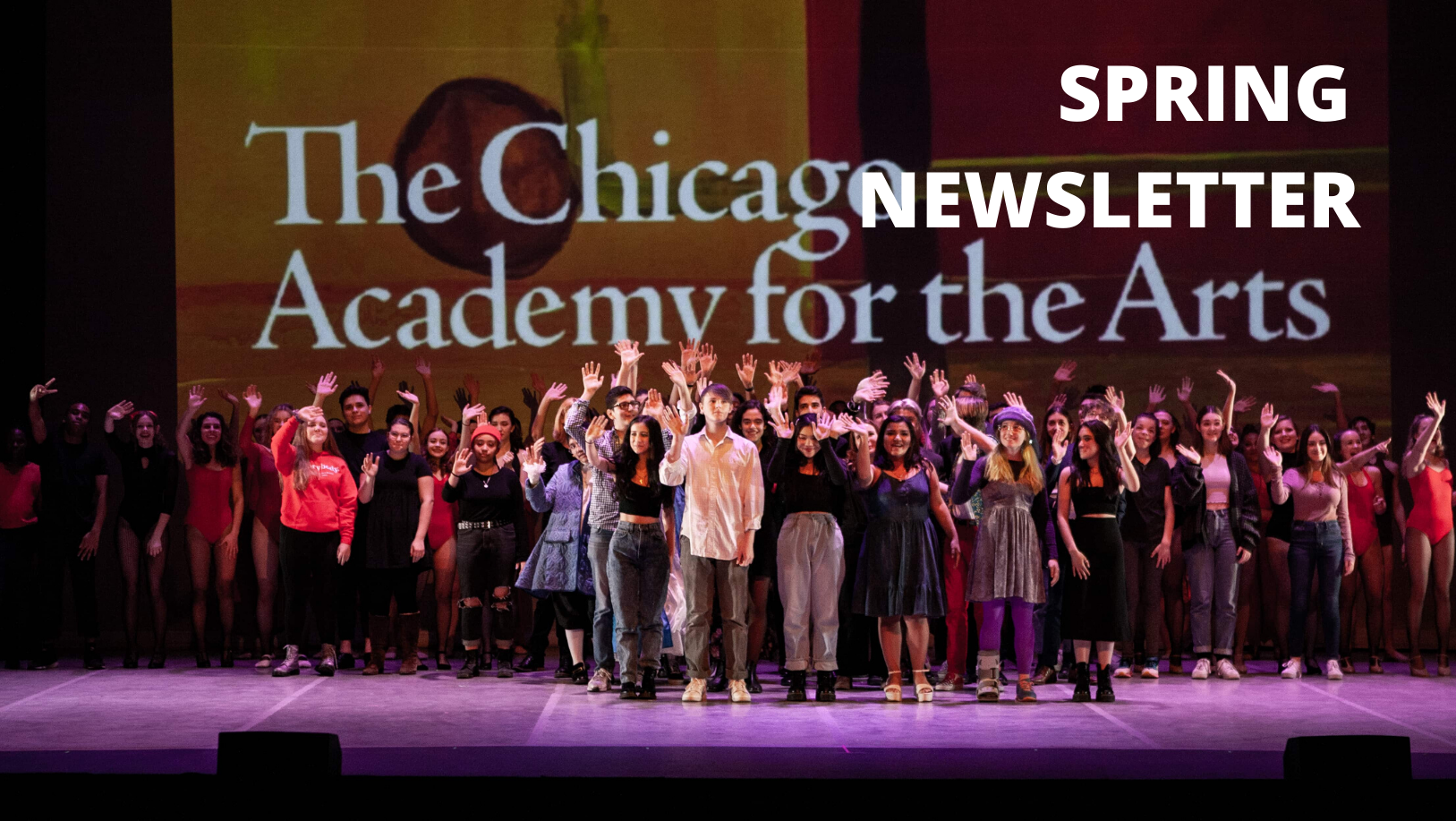“We thought we were choosing The Academy for the guidance for our daughter’s dance career. What we received was that plus so much more. Now as we end this chapter of our lives, our daughter begins her next chapter at Juilliard, and a dream has come true. A dream we could not have accomplished without The Academy.”
”
The Academy Dance Department is recognized as one of the leading preparatory institutions for top colleges and dance companies in the country.
At the core of the Dance program is the intensive study of technique and artistic development. In addition to a foundational class in ballet every day, where students delve deep into classical technique, dancers study jazz, modern, pointe, and partnering, and improvisation.
Students perfect jetés, attitudes, expressive movement, and arabesques. Furthermore, Academy dancers will have the opportunity to audition for The Academy’s Repertory Dance Company, and perform in Chicago and beyond.
Students will also grow their understanding of dance history while working with both Academy faculty and world-renowned guest artists.
More About The Dance Department
The Dance Department audition involves an hour long group class that focuses on both ballet and jazz. This is followed by a solo audition in the style of the applicants' choice and an interview with the Dance Department Faculty.
Celebrating 30 years of transforming young dancers, Randy Duncan received a feature in The Chicago Sun-Times!
Check out Jason Patera and Zachary Jeppsen (Dance ‘18) featured in Chicago Tribune!
Pictures from the 2021 Summer Program!
A small army of faculty began a two-day, 400-mile caravan, stopping at each senior’s home to hand-deliver diplomas and personally applaud each graduate. Congratulations to the Class of 2020!
Pictures from the 2019 Alumni Party, updates of Alumni Grants, the 2020 Alumni Challenge, and Showcase Honoring Margy Stover
Photos from the 2019 Mix at Six Dance Performance at Harris Theater
Join the Dance department for their Spring Dance Concert!
Join the Dance department for their Spring Dance Concert!




A new piece created and choreographed by Randy Duncan for the Ira Antelis project "60". This features Zach Jeppsen (Dance '19) at The Athenaeum Theatre! "Tears for Mom" was rehearsed in the Academy Dance Department over the summer of 2017 with both Zach and Joey Massarelli (Dance '14).

A few clips from the 2017 Spring Dance Concert. Choreography by Brian Brooks, Giselle Diaz, Randy Duncan, Vernard Gilmore, Stephanie Martinez, and Patrick Simoniello.


A clip from "Unbounded", choreographed by India Hobbs, from the 2017 Senior Choreographed Dance Concert.

Rehearsal for the Class of 2017's Senior Choreographed Dance Concert. Evan Boersma and Morgan Clune perform "One True Love" by Giselle Diaz.

The Dance Department prepares for their Spring Dance Concert 2016.

Every senior choreographs a dance for 4 months. Watch Dani's story on how she finally accomplished what she'd been planning since freshman year.

Sydney Jones' (Dance, '16) piece for the Senior Choreographed Dance Show 2016.

Randy Duncan in 1994! His piece "Urban Transfer" as featured in the WTTW - Chicago PBS special "Love in 4 Acts." Check it out!
FACULTY
Chair - Dance
Randy Duncan, a native Chicagoan, has the unique privilege to be a three-time recipient of Chicago’s prestigious Ruth Page Award for Outstanding Choreographer of the year. He teaches worldwide and for the past twenty-two years has been on the Academy faculty.
Assistant Chair of the Dance Department
Patrick Simoniello began his professional career as a dancer with The Joffrey II Dancers in New York City in 1993. He was soon promoted to the main company of The Joffrey in 1994.
Olga Meyer graduated from Azerbajian State College in Baku and earned her Masters in Music from the State Conservatory. She taught and concertized before coming to the United States in 1981. She has been at The Academy since 1985.
Dance Faculty
Ethan Kirschbaum graduated summa cum laude with Departmental Honors in Dance from The Ailey School/Fordham University.
He has danced professionally with Hubbard Street 2, Saarländisches Staatstheater, River North Dance Chicago, Lucky Plush Productions, Santa Fe Opera, and Lyric Opera of Chicago.
Dance Faculty
Robyn Mineko Williams is a director and artist from Chicago, IL. She is drawn to embodiments of memory, time, lineage and our relationships with the traces left in us of the people we encounter. Robyn is the founder and director of Robyn Mineko Williams and Artists (RMW&A), which houses and shares a body of interdisciplinary performance created in collaboration with an evolving roster of dynamic artists and designers.
Jazz classes are based in ballet technique with heavy reliance on the combination of African and modern dance idioms. All exercises stress central strength, with an emphasis on expressiveness through the torso, the isolation of the head, shoulders, rib cage and hips. Rhythmic patterns, dynamic variations, and strong and subtle qualities of movement are explored. Dancers are given combinations that are challenging at their level, depending on their level of technique.
Modern classes introduce the concepts of movement used in Martha Graham Technique. Strength is fostered through floor-work exercises designed to teach the initiation of movement from the back and lower spine. Flexibility is increased through a variety of stretching components within the exercises. The forms and patterns learned in floor work are applied to center work and to combinations across the floor. Movement and principles learned in level C (beginning) are furthered explored in B (intermediate) and A (advanced) classes. Accuracy and dexterity are emphasized. The complexity of movement increases as students become familiar with the Graham vocabulary.
Dance Composition enables students to explore their individual creativity. Through compositional studies, students learn to articulate and communicate ideas, as well as to analyze and to critically evaluate movement. Students will gain the ability to compose short movement phrases as well as more lengthy compositions that will be performed at the Senior Choreographed Dance Concert. Dance Composition is taken by students during their junior and senior years.
Pointe classes are designed to build a higher level of classical training through the use of ballet vocabulary on the tip of the toes, using specially designed shoes known as pointe shoes. Demonstration of balance, strength, and transfer of weight over the tip of the toes is necessary to be part of this class.
Pas de Deux is designed for students who have attained and developed a high level of ballet technique with a clear understanding of balance and transfer of weight over the tips of the toes. The female is able to be supported by the male dancer through turns, lifts, and other various artistic expressions. This course is also designed to provide students with the historical and classical pas de deux and variations of the past.
Men's class emphasizes specific techniques applicable to a masculine understanding of ballet. Turns, jumps, and leaps specific to the male ballet vocabulary are the central content of this course.
*Course titles reflect transcripts for the 2017-2018 freshman class.





























































Ballet classes presuppose a beginning knowledge of the technique. They foster strength, balance, and dexterity. At the barre, traditional exercises condition and prepare the musculature to anticipate the execution of virtually all movements of the classical vocabulary. The nature of the exercises allows students to widen their personal range of motion. The concepts learned at the barre are tested in the center through the adagio (lyrical quality, balance), and allegro (small and big jumps) components of the lesson. The knowledge and dexterity acquired in Ballet C are applied to more challenging usage of the exercises and center floor combinations for levels B and A.